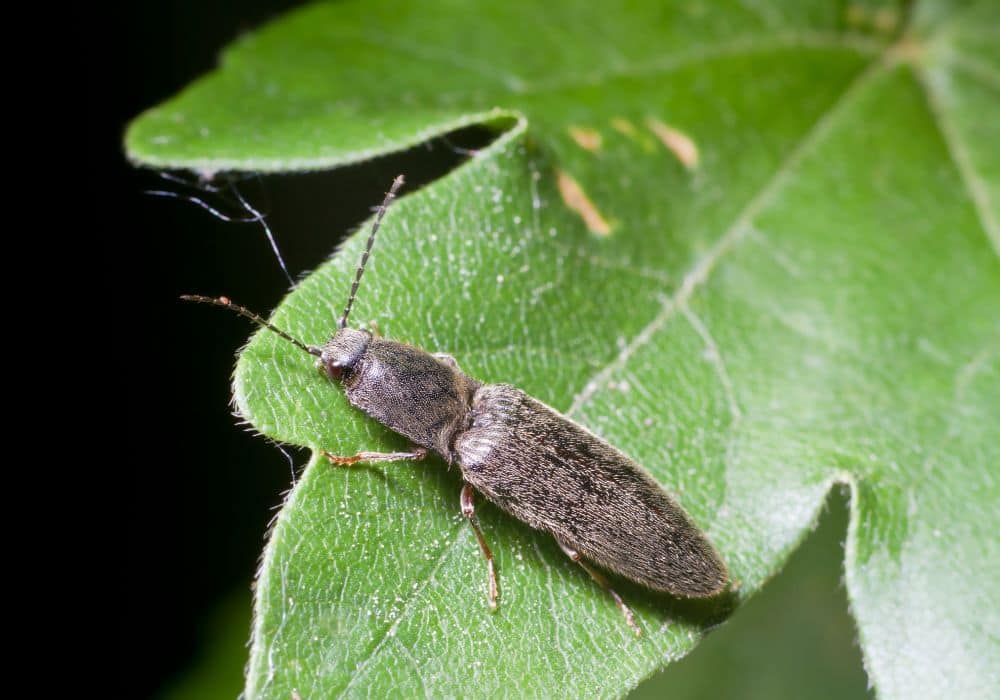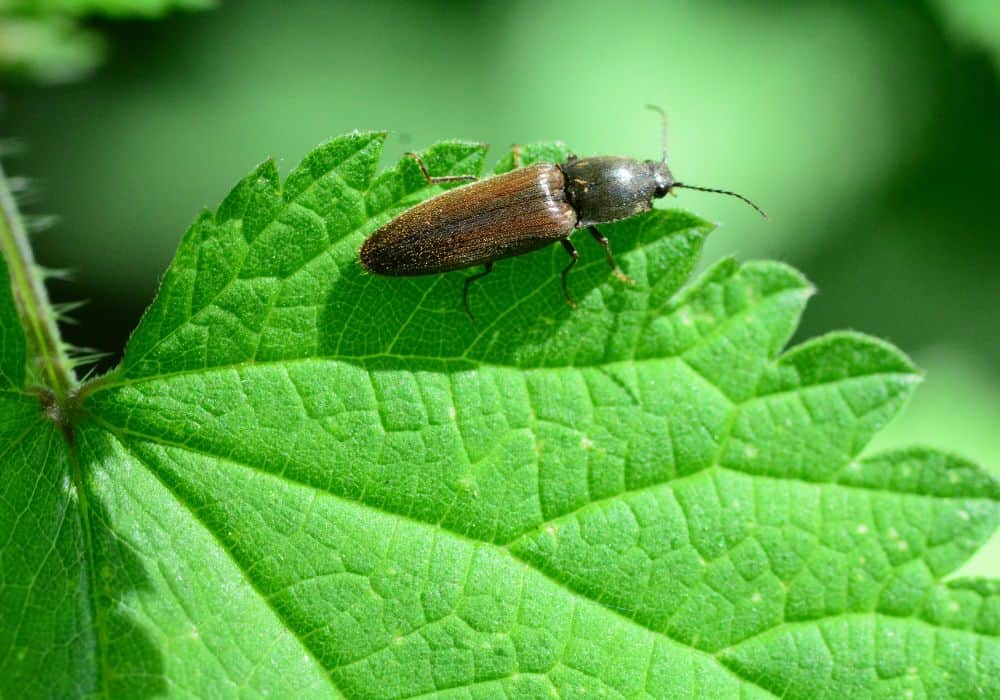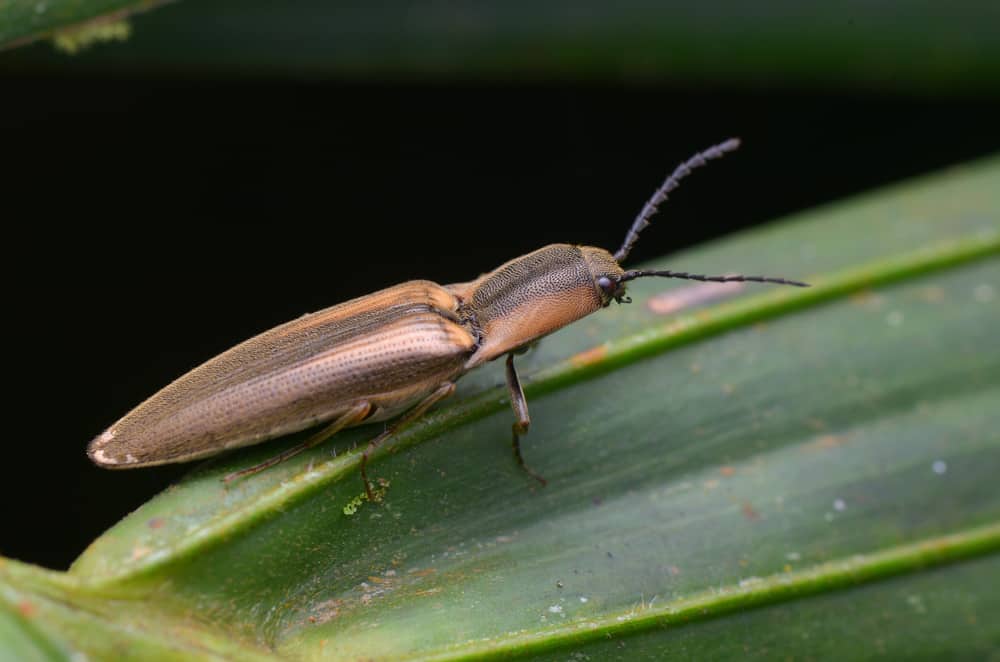Click beetles are one of those bugs that many people don’t recognize even though they are common all around the globe. There are over 900 known species in North America alone with many more believed to haven’t been identified yet. Despite that, a lot of people confused click beetles for other common pests such as cockroaches even though the two are entirely different.
Click beetles, also known as skipjacks, spring beetles, or snapping beetles aren’t nearly as problematic as cockroaches or other household insect pests but are still considered a type of insect you don’t want to encounter in your home. So, here’s how to get rid of click beetles in house and stop them from ever re-entering.
What are Click Beetles Exactly?
So, what exactly are click beetles and should you be worried if you see them indoors?
In essence, click beetles are small insects from the family Elateridae and the order Coleoptera, together with other bugs such as soldier beetles, carrion beetles, ladybugs, and others. Like other bugs from this order, click beetles are hardly harmful but they are still considered pests because they can be a nuisance.
What makes them special – and where their name comes from – is the clicking sound they often make. This is due to a defense mechanism that’s unique to this insect – when adult click beetles get turned on their backs for whatever reason they can bend their segmented backs at an external angle and then snap them the other way in an instant to catapult themselves into the air and hopefully fall on their feet.
It’s not exactly a strategy with 100% guaranteed success, however, it is a 50/50, and even with a failure, the beetle can just try flipping again. This can sound silly at first but, for a lot of bugs, falling on their back and not being able to flip over is often a death sentence.
From that point of view, the click beetle’s unique adaptation is an enormous evolutionary benefit and it’s no wonder these beetles have spread all over the planet.
What about the rest of this beetle’s characteristics, however? Aside from having a catapulting and clicking noise thorax, these household pests are fairly “standard” for a bug. Their life cycle includes the 4 basic stages: 1) adult beetles lay eggs, 2) the eggs turn into click beetle larvae (also called wireworms), 3) then a pupa, and finally – 4) into new adult click beetles.
As for their preferred habitat and diet, those are also fairly standard – click beetles prefer environments that are warm and high in moisture, as well as ones that are abundant in plant matter. That’s because, in all of their life stages, click beetles feed on plants – the larvae worms feed on the roots of plants while they grow and adults feed on pollen, nectar, leaves, and flowers.
Grown click beetles can also feast on other small bugs such as aphids which technically makes them “partly beneficial” but that’s a rare occurrence. Most of the time, these bugs eat plant matter which means that a click beetle infestation can spell disaster for your indoor garden or for other plants such as corn, potatoes, or other vegetables.
Are click beetles dangerous to you, your pets, or your home?

Destroying plants is pretty much the main and only entry to the very short list of click beetle problems homeowners should worry about. Even that isn’t often seen as a major problem as click beetles don’t have the insane reproduction rate of other insect pests such as a roach or ant infestation, and their destructive potential for your potted plants isn’t that major
Additionally, because adult click beetles are fairly large and noticeable – different species range anywhere between half an inch to two inches in length – it’s pretty difficult not to notice them as soon as they get inside your home. They are noisy and jumpy too, after all, as that’s in their nature.
These are good things, however, as it means that a click beetle infestation is unlikely to remain unnoticed until it has become unmanageable, as is the case with a lot of other nasty household pests.
What about damage or risk to other aspects and parts of your household, however? Do click beetles bite or sting? Do they spread any diseases? Are they a danger to your pets or kids? Can they cause any foundational damage to your house’s walls, floors, or ceiling?
Fortunately, the answer to all of these questions is a “No” – click beetles are pretty much harmless in any sense of the word and for anything other than your potted plants. This is very much why click beetles are considered nuisance pests more than anything.
What are click beetles doing in your house in the first place?
If these insects only (or mostly) feed on plant matter, what incentive do they have to get indoors? None, really.
In most cases, when click beetles get into our houses and start spreading there, that’s by accident or because the weather/climate outside has gotten too harsh and they’ve instinctively gone to the nearest warm and high-humidity place they could find.
Other than that, click beetles don’t actually care for the insides of our homes.
How to Get Rid of Click Beetles in House?

Even though they are more or less just a minor nuisance pest, click beetles are likely not something you want in your home unless you really like funny bugs. Especially if you care for your potted plants, removing the larvae of click beetles from the carpet and from your plants’ soil as soon as possible is key.
You can just use a vacuum cleaner for the floor, however, if there are eggs and wireworms in the soil of your plants, you’ll need to use soil-friendly insecticides such as natural soaps and oils or microbial insecticides – vacuums just can’t help you with that.
For the more out-of-control scenarios, you may need the help of pest control companies, of course, but such instances are unlikely to happen indoors and are more common in neglected backyard veggie gardens or on farms.
When it comes to indoor matters, prevention is the main thing to focus on – getting rid of the few click beetles that have made it inside is easy but you don’t want to have to do that all the time. The next good news here is that indoor click beetle prevention is also simple – you just have to seal the cracks and crevices on your home’s exterior that insects can get in through.
These cracks and crevices typically include the space under and around poorly insulated doors and windows, as well as cracks in the walls, basement, and ceiling. “Simple” doesn’t necessarily mean easy or affordable, unfortunately, and old houses may need a fair bit of work and investment to be insulated properly.
Still, such insulation is important not just against click beetles – it’s key for preventing infestations from other nastier pests such as cockroaches and ants, and it’s also important for the proper temperature regulation in your home, as well as lowering your energy bills.
In that case, noticing click beetles in your home can even be seen as a blessing in disguise – as a symptom that your home’s exterior needs fixing before a bigger problem comes your way. After all, it’s certainly better for click bettles to be the first pests to get through the cracks and crevices in the basement walls rather than carpenter ants or termites.
In Conclusion
Click beetles are technically a pest but they are really more of a nuisance pest rather than anything else. Some people can even find them funny and entertaining but they still aren’t something you want in your living room or bedroom.
Thankfully, getting rid of click beetles is easy – adults can be easily dispatched with a quick hit with a slipper or by trapping them in a glass and throwing them out the window. Eggs, larvae, and pupa, on the other hand, can be vacuumed off the carpet pretty easily but may require insecticides if they’ve made it into the soil of your potted plants or indoor garden.
From there, prevention is the name of the game. Click beetles don’t have much incentive to get inside our houses – they aren’t attracted to our trash cans or pet food the way other pests are – so, just sealing off possible accidental entry points tends to be enough.
